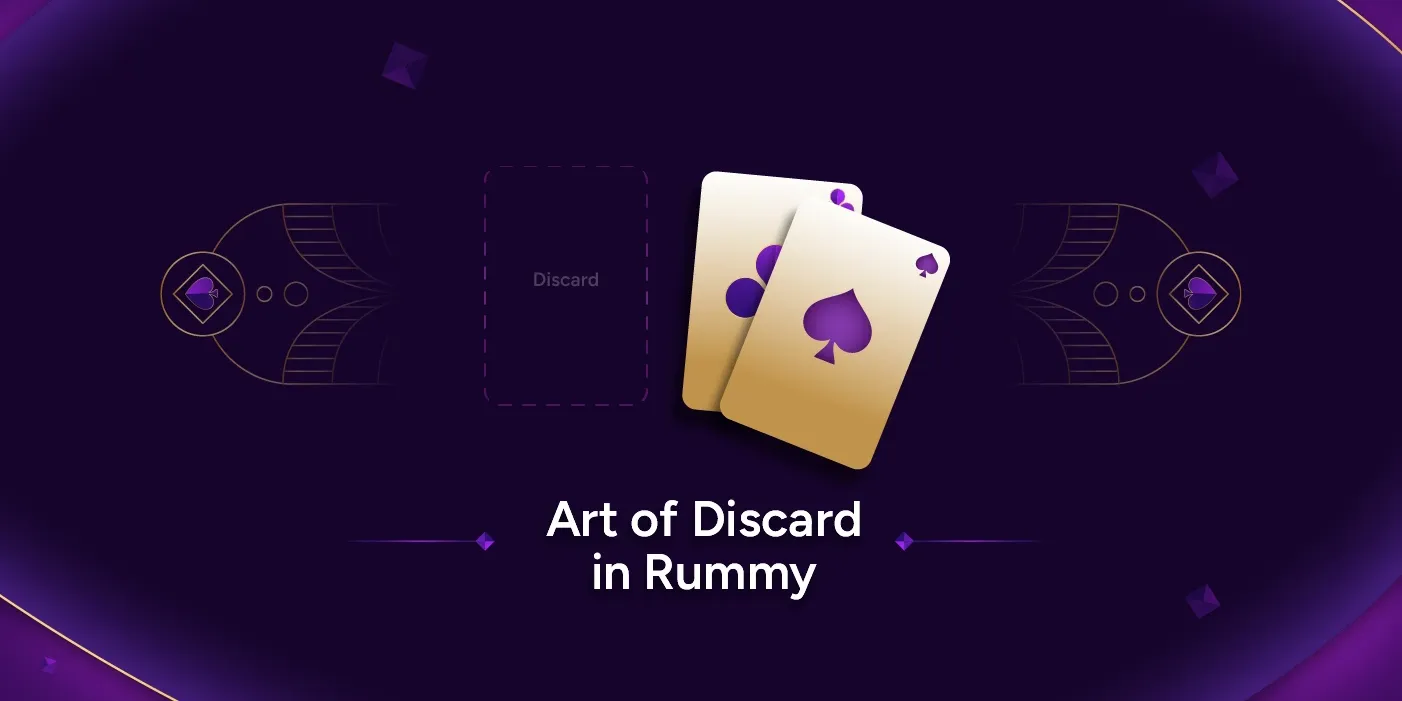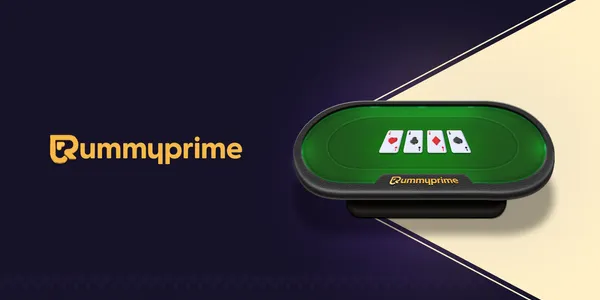- Home
- Rummy World
- How to Master the Art of Card Discarding in Rummy
How to Master the Art of Card Discarding in Rummy
Discarding in Indian Rummy is as crucial as picking the right cards. Every discard provides strategic information to opponents while shaping your hand.
Rummyprime Elite Editors | 12th Apr, 2025

Master the Art of Card Discarding in Rummy
Discarding in Indian Rummy is as crucial as picking the right cards. Every discard provides strategic information to opponents while shaping your hand. A well thought-out discard can prevent rivals from completing their sets or sequences while helping you to get rid of high-value, unplayable cards that may add to your points if an opponent declares first.
Strategic discarding improves winning chances by balancing risk and deception. By observing opponents’ picks, you can deduce their probable sets and avoid discarding useful cards. At the same time, discarding misleading cards – such as those close to forming sets but not quite there – can create confusion and delay their progress.
Understanding the Basics of Rummy Card Discarding
In Rummy, discarding means placing one card from your hand onto the discard pile at the end of each turn. The discard pile plays a crucial role as players can pick the top-most card to form sets and sequences. Observing the discard pile closely helps to track opponents’ strategies. Smart discarding prevents opponents from benefiting while improving your own hand for a valid declaration.
Key Strategies for Smart Card Discarding
- Observe opponents’ picks: Track the cards they are picking from the open deck to avoid discarding cards they need.
- Use middle cards strategically: Mid value cards (5,6,7) are versatile; hold onto them and try making sequences with them, more than high value cards.
- Drop high-value cards early: If not part of a set or sequence, drop high-point cards (J,Q,K and A) early to minimize the risk of more penalty points.
- Bait opponents: Discard cards that might mislead opponents about your hand strategy.
- Prioritise discarding duplicates: If you have three 8’s and only need two, discard the extra one at the earliest.
- Use jokers wisely: Don’t discard potential wild card jokers that might help to complete a pure set or sequence.
- Adapt to changing game play: Reassess your discard strategy based on new draws and opponent patterns.
When Should You Discard High-Value Cards?
- Early game strategy: If you don’t have a clear sequence or set, discarding face cards (J,Q,K,A) will minimize potential penalty points in case of a loss.
- Unusable high cards: If a high card is not contributing to a pure sequence or a potential set, discard it immediately.
- Opponent’s play pattern: If opponents are not picking high-value cards, discarding them early reduces your point weightage.
When to Hold High-Value Cards?
- Close to forming a set/sequence: If you require just one card to complete a high card group, then holding onto them is wise.
- Observing opponents’ needs: If an opponent is likely to need a face card, holding onto it can prevent them from completing their hand early.
- Joker advantage: If one of the high-cards is a wild card joker, then holding onto them might help your case. Also, jokers don’t add to your total if left ungrouped in case of a loss.
Also read: Joker Rules in Rummy
How to Use the Discard Pile to Your Advantage?
In Rummy, the discard pile is a strategic tool. Pick from it only if the card completes or extends a set or sequence; otherwise you will end up revealing your hand strategy. Avoid taking high-value cards early to remain unpredictable. Discard high cards first, if they are not fitting into your hand strategy. Drop cards that your opponent won’t need strategically to block them, while refining your own hand.
Common Mistakes to Avoid While Discarding in Rummy
Here are some common mistakes to avoid while discarding in Rummy:
- Discarding jokers: Jokers are crucial to form sets and sequences. Avoid discarding them unless you have an excess.
- Revealing key cards: Do not discard cards that might help your opponent to complete sets and sequences; especially middle cards like 5,6, or 7.
- Not observing opponents: Failing to track your opponent’s picks and discards can result in giving away valuable cards that help complete their hand.
- Holding high-value cards for too long: If your pure sequence is not formed, then holding high-value cards like J,Q,K and A can increase your penalty points if the opponent declares first.
- Discarding immediately after picking: If you pick a card and discard it immediately, you reveal your strategy to opponents.
If you are starting out on your Rummy journey, try the Rummyprime app – it is the most rewarding platform for both beginners and pro players. Rummyprime offers various practice formats that players can choose from without paying a Buy-In fee, to learn the game and improve their strategies. There are also competitive freeroll tournaments on Saturday and Sunday, where players can play against real opponents and win in-game credits. Visit the official website www.rummyprime.com to download the Rummyprime app and start playing now.
FAQs
1. What is the best card to discard in Rummy?
2. How do you decide which card to discard in Rummy?
3. Should you pick up cards from the discard pile in Rummy?
4. What is the biggest mistake while discarding in Rummy?
5. How can I improve my card discarding strategy in Rummy?
Featured Articles



